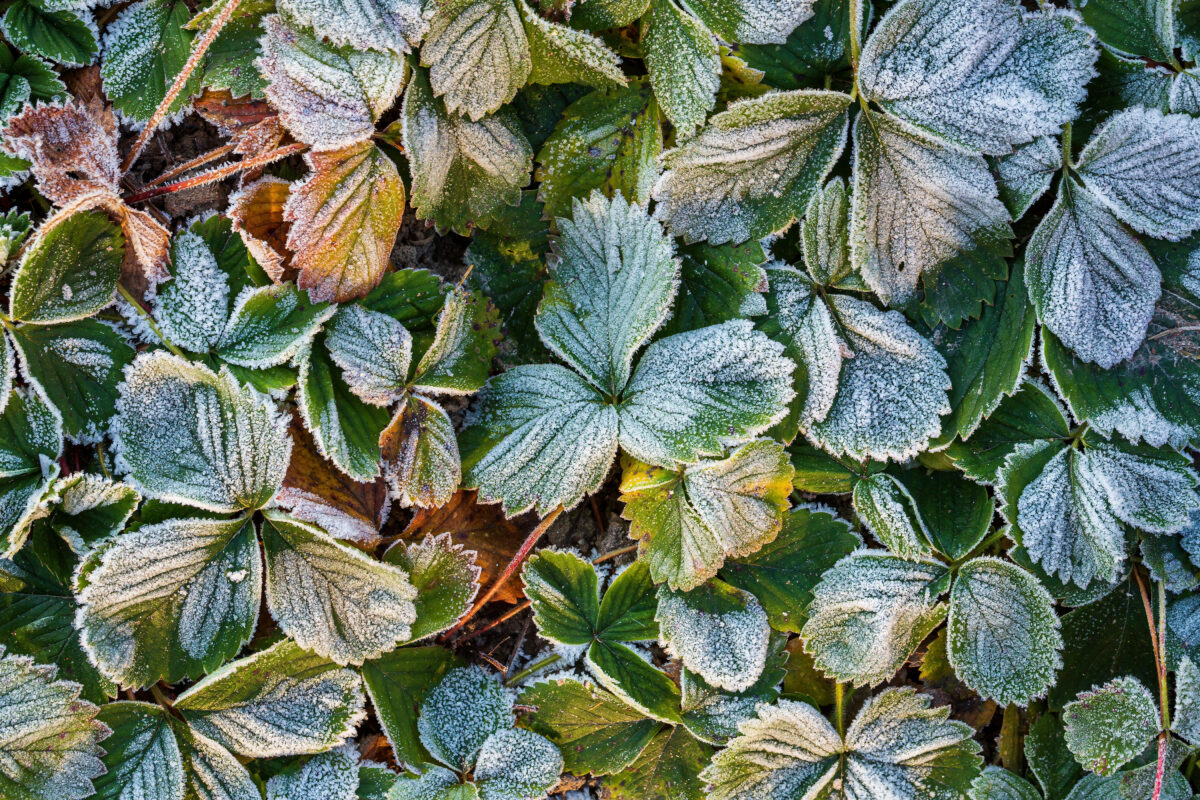Freezing temperatures can cause significant, long-lasting damage to your plants. You can minimize or avoid this damage by taking a few practical steps to protect your plants, enabling them to thrive when the weather warms up.
How to Prepare Your Plants Before a Freeze
It is always best to prevent damage rather than try to recover from it after it happens. Keep an eye on freeze warnings during the fall and winter months. When you learn that the temperature is likely to drop below freezing, take steps to protect your landscaping.
1. Fertilize your plants
Fertilize your plants with the correct blend of nutrients well before the weather gets cold. Fertilization can encourage root growth through the winter months, as well as control weed growth in the spring. Healthy plants are less likely to be stressed and harmed by cold temperatures.
Learn more about why you should fertilize in winter to better prepare for spring.
2. Put down a generous layer of mulch
Add a layer of high-quality, organic mulch around each plant. The mulch should be 2 to 3 inches thick. This will keep the roots insulated, nourished, and hydrated throughout the winter. Be sure not to pile the mulch up against the trucks of your plants and trees, as this can cause damage to them.
Learn more about how to protect your plants with mulch and other materials.
3. Use a frost blanket
If you want to keep your plant at its current size, we recommend using a frost blanket. These light-weight, woven covers are available from most hardware stores and gardening centers. They are made especially to insulate plants when the temperatures drop. Cover the plant by “tenting” the blanket so that the plant is covered, but the cover is not resting on or touching the leaves.
Following these steps will give your plants the best of chance of survival by preventing frost damage.
Should I trim or prune plants after a freeze?
Wait a few days after the freeze before you prune any damage. Pruning or trimming plants too soon after a freeze is not a good idea. Wait until after the possibility of another freeze has passed before trimming off damage. Cutting back damaged growth too soon makes plants more vulnerable if it freezes again before they have time to recover.
Learn more ways to protect your entire lawn during a Texas freeze.
How to Care for Plants After a Freeze
Despite your best efforts, sometimes plants still get damaged by cold weather. Here’s how to nurture damaged plants back to health and encourage them to regenerate.
- Identify and Prune Damaged Plants
Once any threat of frost has passed (In Houston, this means as late as mid March), identify any damaged or dead growth. Once the weather starts to warm up it’s helpful to remove the damaged leaves and buds to encourage regeneration. See more details about how to identify damaged plants and save them.
2. Water and Fertilize Freeze-Damaged Plants
You can help plants recover more quickly from minor damage by watering them and using small amounts of fertilizer. This encourages the plant to regenerate on their own and continues to protect them against future freezes.
Get Expert Help from Archer Services to Prepare for the Cold
Preparing for cold weather is important, but the task can be daunting. If you need help to prepare for a freeze or assess the damage after one, call the lawn-care experts at Archer Services. We can improve the health of your lawn and gardens by using the right methods to prepare for and recover from winter weather.

